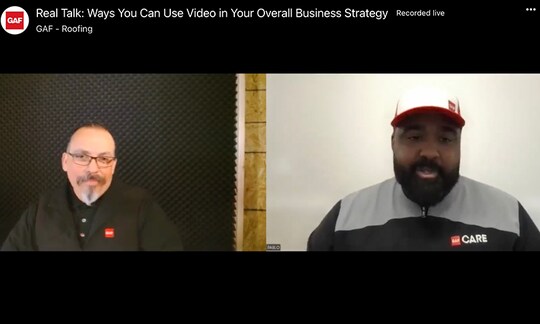
If your goal is to drive interest in your roofing business through marketing, consider that 59% of respondents in a recent survey said email marketing influences their purchase decisions. On top of that, 78% of marketers saw an increase in email engagement over the course of 2019.
These numbers may not be surprising. It's important to note, however, that crafting an engaging email that drives interest isn't as simple as typing up a few words, quickly coming up with a subject line, and hitting send.
Roofing email marketing is part art, part science. As a roofing contractor, if you want to earn a greater ROI for your email marketing efforts, here are some best practices to keep in mind.
A Strong First Impression
As in life, first impressions matter over email.
Two factors can help you make a good first impression: your subject line and your preheader. The subject line is the first thing an email recipient sees in their inbox, and the preheader immediately follows it. Think of it as preview text or a sub-headline that will provide a bit more description about the contents of your email.
For example, if you're sending an email to prospects about roofing maintenance tips, you'll want to catch your audience's eye by putting the most important information in the subject line with something like: "Tips For Maintaining Your Roof Through the Winter." You can then share a few more details, briefly, with preheader text. You should keep your subject line to fewer than 50 characters to ensure the words don't get cut off.
Research indicates that 47% of email recipients will open your email based on the subject line alone. Emails won't do your roofing company any good if they don't compel people to click, so use the subject line and preheader to your advantage to pique audience interest and make your marketing campaigns more effective.
Cómo crear contenido interesante en correos electrónicos
If you want your emails to attract new customers, you need to focus on making the contents of those emails engaging. Mira algunos consejos:
- Concéntrate en el cliente, no en ti: tus campañas de comercialización por correo electrónico deben basarse en las necesidades y las preocupaciones de tus clientes, no solo en tu negocio. Yes, you should include details about what sets your roofing company apart from competitors, but you shouldn't do this at the expense of speaking to your customers in an empathetic voice. Use email to build a relationship with potential customers. Think about homeowners' most pressing concerns, whether it's the cost of repairing or replacing their roof or the safety of their families, and use this to anchor your email content. Explore the GAF Roof Views blog for articles that you can share with your audiences. After offering valuable insights that speak to your customers' top concerns, you can pivot to making your sales pitch.
- Personalize your emails: If you have the first names of the people who will receive your marketing emails, use them in the subject line or in the first line of your email copy. Emails with personalized subject lines are 26% more likely to be opened than those with non-personalized subject lines. The less generic, the better.
- Shorter is better: Have you ever been at a party with a chatty person and wished the conversation would end? Well, bad email marketing can feel much the same way. Keep your emails brief, ideally no more than a few super-short paragraphs. Also, don't forget to include headers and bullet points, where appropriate. This is really important because most people don't read emails—they scan them.
- Get visual: While text is important, so is imagery. Include images of past roofing projects to demonstrate what you can do. Pictures of you and your team can also make your emails feel more human and relatable. However, don't overstuff your emails with images. Emails with too many images may get sent to spam folders, according to the marketing company Hubspot. They also take a longer time to load, which may be frustrating for some people.
- Include a clear call to action: Anyone reading your marketing email will want to know what to do next. You can guide them by including a clear call to action, like a link labeled "Schedule a Free Estimate." And don't forget to make your call to action stand out. You can highlight it in bold, use a larger font, or even include a graphic button so email recipients don't miss it.
Getting roofing email marketing right takes both time and practice, but you can create engaging and impactful marketing emails by focusing your message on your customers, keeping things brief, and including subject lines and preheaders that clearly demonstrate the value someone will get from your email. There are plenty of ways to market your business, but mastering email marketing is one of the most effective ways to turn quality leads into future customers.
For more tips and solutions that can help you achieve your business goals, check out GAF's resources to grow your business.



